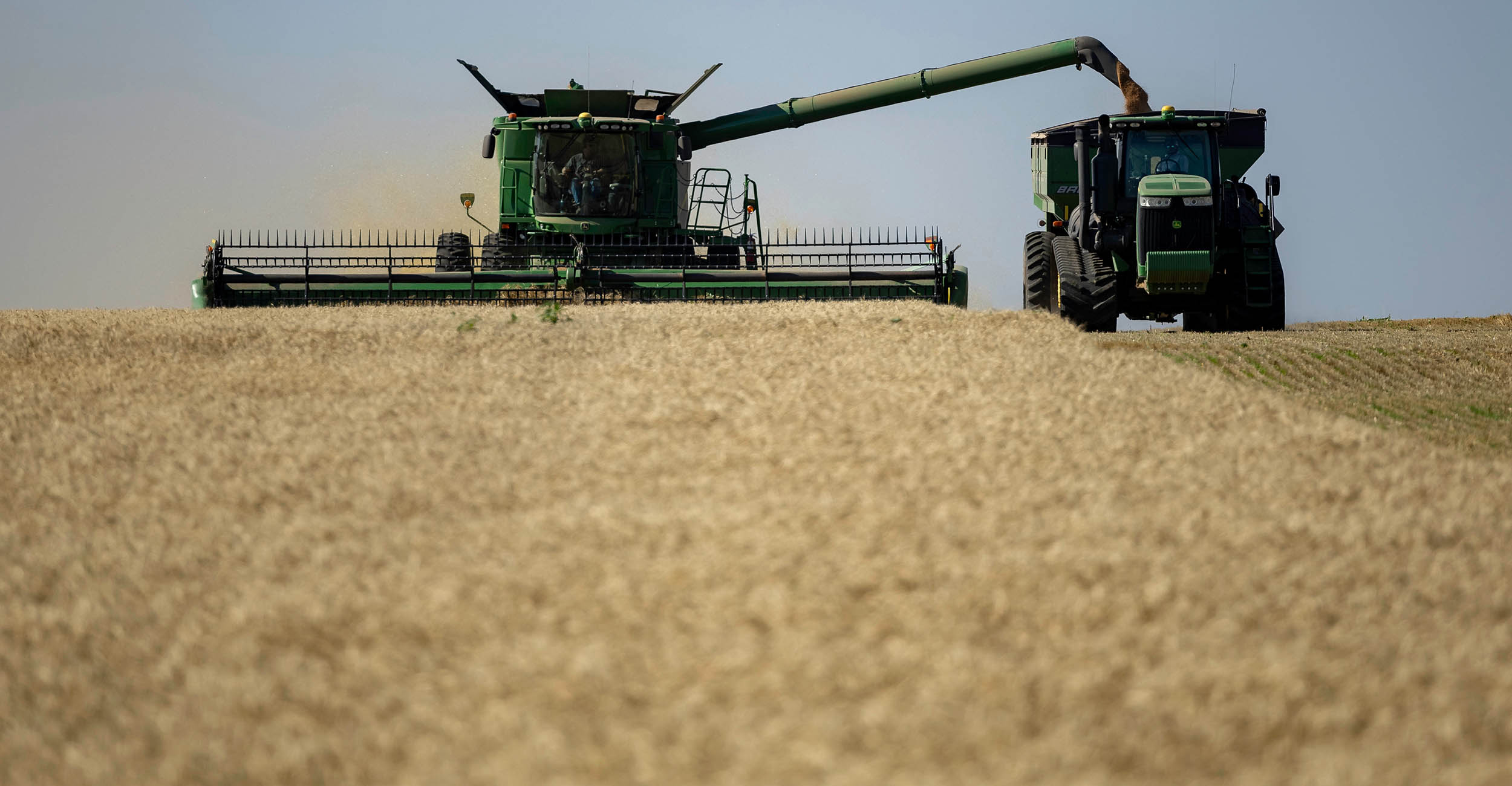
Signals to sprouts: OSU assistant professor Kim studies link between broadband grants, agricultural productivity
Tuesday, May 13, 2025
Media Contact: Hallie Hart | Communications Coordinator | 405-744-1050 | hallie.hart@okstate.edu
A small-town farmer opens an internet browser and types a question into a search bar.
“What is the wheat market outlook in Oklahoma?”
Instantaneously, answers fill the computer screen. Price updates and forecasts are available from multiple sources. A recent Oklahoma Farm Report article pops up. Links to the Oklahoma State University Extension website appear.
All of these resources could assist with managing the family farm. Although the term “high-speed internet” might evoke images of corporate employees sitting behind computers in city skyscrapers, internet access is also revolutionizing the rural industry, changing how farmers feed the United States.
Dr. Minhae Kim, an assistant professor in the Spears School of Business Department of Economics, explored this topic as the lead author of “Bridging the rural divide: The impact of broadband grants on U.S. agriculture.” Coauthored with Dr. Jayash Paudel from the University of Oklahoma, the paper is published in European Review of Agricultural Economics, but it focuses on an American program that launched in 2002.
The Community Connect Grants (CCG) program helps fund the implementation of broadband service in rural areas.
In U.S. zip codes receiving these grants, crop productivity rises by an average of about 9.3% after three years, according to Kim and Paudel’s analysis.
“This might show that broadband has a really large impact we cannot always think of, and it will help economically,” Kim said. “Maybe some people think internet is not a necessity, but this paper says it may be a necessity. It’s really necessary for some people.”

The OSU and OU faculty members’ collaborative research is particularly relevant in Oklahoma. From 2002-17, Oklahoma received about $39 million through the CCG program, the highest amount awarded to any state, according to their paper. These initiatives have expanded internet access for Oklahoma Tribal Nations and rural communities.
The U.S. Department of Agriculture reported 85% of Oklahoma farms had internet access in 2023, a jump from 80% in 2021. Still, this meant 15% of Oklahoma farms did not.
Early in her career, Kim didn’t know about these disparities.
She grew up in South Korea, where nearly 100% of households have internet access.
After receiving bachelor’s and master’s degrees in economics from South Korea’s Seoul National University, Kim obtained a master’s degree and a doctorate in economics from Ohio State University. As she spent time in the U.S., she encountered rural areas with weak or nonexistent internet signals.
“It was hard to understand when I moved here,” Kim said. “There are areas where I cannot use the Wi-Fi. What’s going on? It was interesting to learn all of this.”
Broadband grants remedy these issues, funding high-speed internet infrastructure across the nation. Intrigued, Kim started researching the grants’ impact on the U.S. economy, initially focusing on the banking industry. She noticed grant information wasn’t neatly consolidated into one online spreadsheet or database, so she sifted through PDFs and did the work.
“I collected them all one by one manually, reading them, and entered them into the Excel file and made a big dataset,” Kim said. “I didn’t want to lose that. I thought, ‘Maybe it would be nice to use that at some point.’”
When she crossed paths with Paudel, it was time to revisit the data.
Paudel, an OU assistant professor of economics, has a doctorate in resource economics from the University of Massachusetts Amherst. For their research, Kim combined her broadband expertise with Paudel’s agricultural economics knowledge.
The authors analyzed agricultural outcomes in U.S. zip codes from 1994-2017, looking at data before and after the CCG program’s introduction. Kim and Paudel sorted the zip codes between high-income and low-income areas, studied seven individual crops and assessed overall trends. Their findings indicate the grants are more strongly correlated with increased crop productivity in low-income zip codes, indicating potential for high-speed internet to lessen economic disparities.
Not all grants are the same, and their research suggests dollar amount matters. Small grants aren’t as closely linked with higher crop productivity as large grants are. Kim said this is likely because a small grant might fund one specific project, such as a community center with computers, while a multimillion dollar grant can impact many areas.
A stable internet connection modernizes agriculture in several ways. Agriculture has grown into a high-tech industry reliant on precision tools. Many farmers use GPS mapping and online databases to keep track of detailed information about their crops.
The internet also allows people to exchange ideas and learn about novel farming methods. Advice is readily available through tools like OSU’s ExtensionBot, which directs users to articles written by agricultural experts.
The economic impact of a plentiful harvest is significant. Kim’s paper states an 8.6% rise in overall crop productivity from the CCG program leads to the total value of agricultural products growing by about $6.51 million. Kim said this implies there are benefits that originally might not have been considered when implementing the program.
Since its public debut in 1993, the World Wide Web has transformed industries from education to health, and agriculture is no different. Although rural areas have faced barriers to internet access, initiatives like the CCG program make a difference, connecting communities to digital “highways” of innovation.
“I was reading another paper on this, and they were comparing it to the interstate highway,” Kim said. “Before 1956, it was so hard to carry around all those crops. And, after there were interstate highways, it’s much faster. Broadband is similar to that.”
